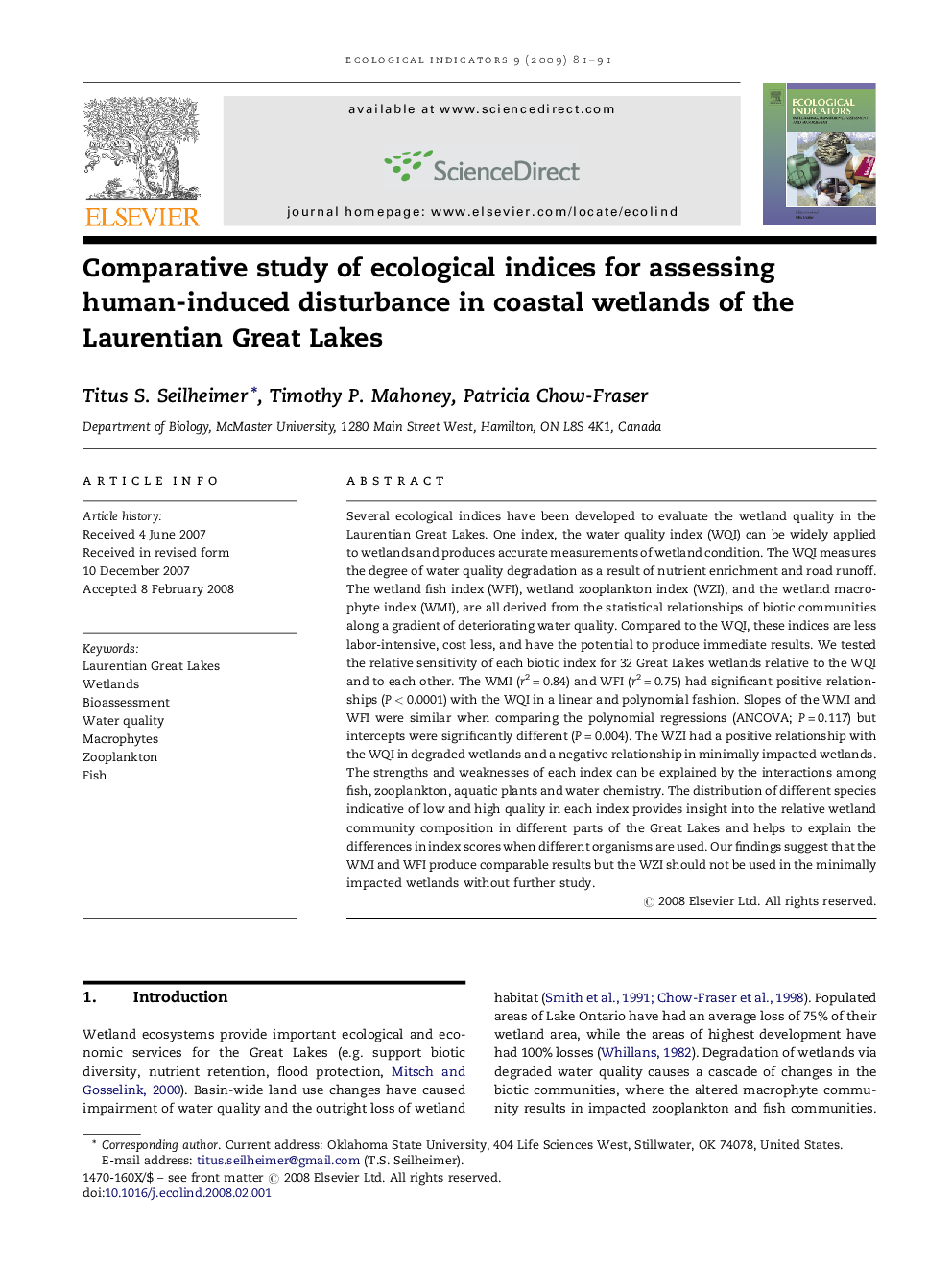| Article ID | Journal | Published Year | Pages | File Type |
|---|---|---|---|---|
| 4374557 | Ecological Indicators | 2009 | 11 Pages |
Several ecological indices have been developed to evaluate the wetland quality in the Laurentian Great Lakes. One index, the water quality index (WQI) can be widely applied to wetlands and produces accurate measurements of wetland condition. The WQI measures the degree of water quality degradation as a result of nutrient enrichment and road runoff. The wetland fish index (WFI), wetland zooplankton index (WZI), and the wetland macrophyte index (WMI), are all derived from the statistical relationships of biotic communities along a gradient of deteriorating water quality. Compared to the WQI, these indices are less labor-intensive, cost less, and have the potential to produce immediate results. We tested the relative sensitivity of each biotic index for 32 Great Lakes wetlands relative to the WQI and to each other. The WMI (r2 = 0.84) and WFI (r2 = 0.75) had significant positive relationships (P < 0.0001) with the WQI in a linear and polynomial fashion. Slopes of the WMI and WFI were similar when comparing the polynomial regressions (ANCOVA; P = 0.117) but intercepts were significantly different (P = 0.004). The WZI had a positive relationship with the WQI in degraded wetlands and a negative relationship in minimally impacted wetlands. The strengths and weaknesses of each index can be explained by the interactions among fish, zooplankton, aquatic plants and water chemistry. The distribution of different species indicative of low and high quality in each index provides insight into the relative wetland community composition in different parts of the Great Lakes and helps to explain the differences in index scores when different organisms are used. Our findings suggest that the WMI and WFI produce comparable results but the WZI should not be used in the minimally impacted wetlands without further study.
